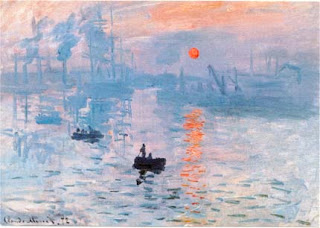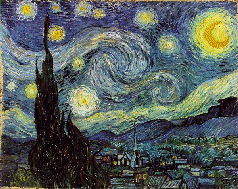Thursday, May 13, 2010
Thursday, February 4, 2010
Transitions
1) Cut - the point where two points come together; to determine what different shots the director wants to be seen on screen an/or the pace of
the scene (quick and subtle)
Cutting on the Action: cut from one shot to another different shot that matches the intensity and the action of the previous shot (shows
continuity between the two actions)
Rapid Cutting: a sequence of rapid cuts used in suspenseful, action-packed or high-impact montage sequences
Fade - fade in (marks the start of a sequence) and fade out/fade to black (marks the end of a sequence)
Fade into or out of black: focus is being moved f rom one scene to another
Fade out to black and back in from black: passage of time
Dissolve - the blending of two shots to communicate a passage of time and/or location, a visually smooth transition between one or more
shots/scenes. Allow for handles (short sequences that lead up to and follow transitions).
(examples of dissolves: ripple dissolve, cross dissolve)
Other Examples of Transitions: wipes, cross zooms, flash frames, jump cuts
2) - Do I need a transition at this point?
- What transition will visually enhance my story-line?
- Which transition will visually detract from my story?
3) Cuts and Dissolves are the best story telling transitions.
the scene (quick and subtle)
Cutting on the Action: cut from one shot to another different shot that matches the intensity and the action of the previous shot (shows
continuity between the two actions)
Rapid Cutting: a sequence of rapid cuts used in suspenseful, action-packed or high-impact montage sequences
Fade - fade in (marks the start of a sequence) and fade out/fade to black (marks the end of a sequence)
Fade into or out of black: focus is being moved f rom one scene to another
Fade out to black and back in from black: passage of time
Dissolve - the blending of two shots to communicate a passage of time and/or location, a visually smooth transition between one or more
shots/scenes. Allow for handles (short sequences that lead up to and follow transitions).
(examples of dissolves: ripple dissolve, cross dissolve)
Other Examples of Transitions: wipes, cross zooms, flash frames, jump cuts
2) - Do I need a transition at this point?
- What transition will visually enhance my story-line?
- Which transition will visually detract from my story?
3) Cuts and Dissolves are the best story telling transitions.
Monday, January 4, 2010
Wednesday, November 11, 2009
Sunday, September 20, 2009
Elements of Design: Space

There's such an intense vibe concentrated in all that free area that you just naturally respond to it with a frown ... it evokes a deadly emotion within you, just by looking at the ruins and beauty and simplicity ... and 90% of it is pretty much an empty haunting sea which gets you wondering how so little can say so much ...
Element of Design: Shape

The circular-type motions of the brush that created the swirls and stars and sun and sky exhibit the motion of those natural elements and their infinite capacity to go beyond what is anticipated ... there's that sense of mystery and an other-wordly quality about this painting.
The castle or whatever that is, with those sharp triangular edges, adds an element of romance; conflict and dynamic and opens up a realm of possibilites for the scope of the imagination.
Principles of Design: Variety
Subscribe to:
Comments (Atom)


